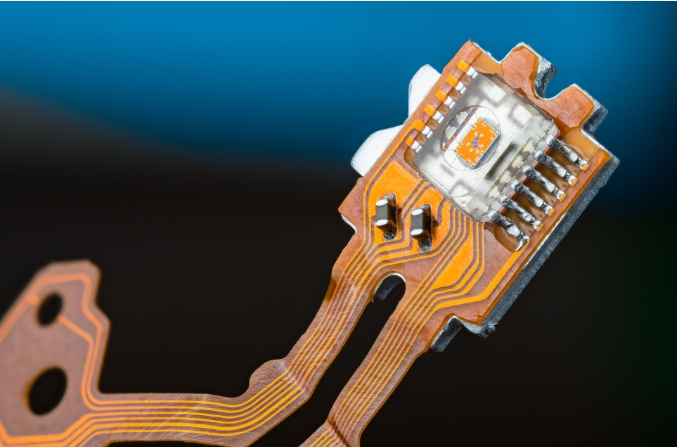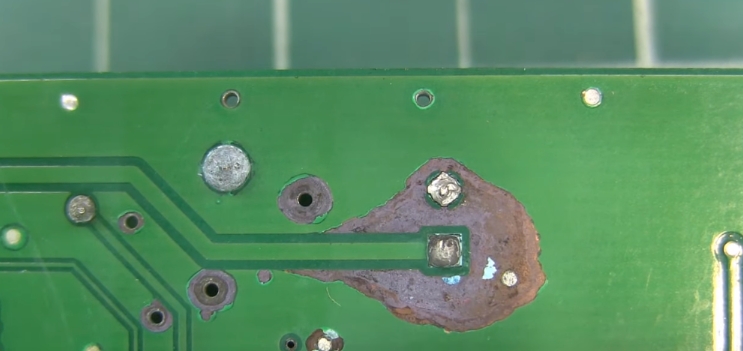Flexible PCB etching is a critical step in manufacturing flexible circuits, but it comes with unique challenges that differ from traditional rigid PCB production. If you're looking to understand the hurdles of etching flexible materials and the best practices for overcoming them, you're in the right place. In this comprehensive guide, we'll dive into the specifics of flex PCB manufacturing, focusing on etching challenges for flex PCBs and providing actionable solutions to ensure high-quality results. Whether you're an engineer or a manufacturer, this blog will equip you with the knowledge to tackle flexible PCB etching effectively.
What Is Flexible PCB Etching and Why Is It Important?
Flexible PCB etching is the process of removing unwanted copper from a flexible substrate to create the desired circuit patterns. Unlike rigid PCBs, flexible circuits are made from thin, pliable materials like polyimide or polyester, which allow them to bend and conform to various shapes. This flexibility makes them ideal for applications in wearables, medical devices, and aerospace technology where space and weight are critical.
Etching is a cornerstone of flex PCB manufacturing because it defines the electrical pathways. However, the unique properties of flexible materials introduce complexities that can affect precision, reliability, and overall performance. Poor etching can lead to issues like trace damage, incomplete copper removal, or even material degradation, resulting in costly rework or product failures. Understanding and addressing etching challenges for flex PCBs is essential to producing durable, high-performing circuits.

Unique Challenges in Flexible PCB Etching
Etching flexible materials presents several distinct challenges compared to rigid PCBs. Below, we explore the most common issues faced during flex PCB manufacturing and why they occur.
1. Material Flexibility and Dimensional Stability
Flexible substrates are inherently less stable than rigid materials like FR4. During the etching process, these materials can stretch, warp, or shrink due to temperature changes or chemical exposure. For instance, polyimide substrates may experience dimensional changes of up to 0.2% under certain conditions, which can misalign circuit traces and affect precision. This instability makes it difficult to maintain tight tolerances, often leading to defective circuits.
2. Thin Material Thickness
Flexible PCBs are typically much thinner than rigid boards, with thicknesses ranging from 0.05 mm to 0.2 mm. This thinness increases the risk of over-etching, where too much copper is removed, weakening the traces or causing breaks. Over-etching can also lead to undercutting, where the etchant eats away at the sides of the traces, reducing their width below the intended 0.1 mm or 0.15 mm design specifications.
3. Chemical Compatibility with Flexible Substrates
The chemicals used in etching, such as ferric chloride or ammonium persulfate, can sometimes react adversely with flexible substrates. These materials are more susceptible to damage from aggressive etchants, which can degrade the substrate or affect adhesion between layers in multilayer flex PCBs. Finding the right balance between effective copper removal and substrate preservation is a constant challenge.
4. Fine Line and Space Requirements
Modern flexible circuits often require fine line widths and spacing, sometimes as narrow as 0.05 mm (2 mils). Achieving such precision during etching is difficult due to the risk of over-etching or uneven etchant distribution. This is especially problematic in high-density designs used in compact devices like smartphones or medical sensors, where even a slight deviation can cause signal integrity issues or short circuits.
5. Handling and Mechanical Stress
Flexible materials are delicate and prone to mechanical stress during handling in the etching process. Unlike rigid boards, flex PCBs can tear or crease easily, especially during wet processing stages. This vulnerability requires specialized equipment and careful handling protocols to prevent physical damage that could compromise the final product.

Solutions and Best Practices for Flex PCB Etching
While the challenges of etching flexible materials are significant, they can be addressed with the right techniques and best practices. Below, we outline proven solutions to ensure successful flexible PCB etching and high-quality results.
1. Use Advanced Etching Equipment and Techniques
Investing in precision etching equipment designed for flexible materials can significantly improve outcomes. For example, spray etching systems offer better control over etchant distribution compared to traditional immersion methods, reducing the risk of over-etching. These systems can maintain consistent etch rates, ensuring trace widths stay within tolerances like ±0.01 mm. Additionally, using laser direct imaging (LDI) for creating photoresist patterns can enhance accuracy for fine line and space designs down to 0.05 mm.
2. Optimize Etchant Chemistry
Selecting the right etchant and adjusting its concentration is crucial for protecting flexible substrates. Milder etchants or lower concentrations can minimize damage to polyimide or polyester materials while still effectively removing copper. Regular monitoring of etchant temperature (ideally between 40°C and 50°C) and replenishment schedules also helps maintain consistent performance. Some manufacturers use proprietary etchant blends tailored for flex PCB manufacturing to balance speed and safety.
3. Implement Dimensional Stability Controls
To combat material warping or stretching, manufacturers can use tension control systems during etching to keep the flexible substrate stable. Pre-baking the material at around 100°C for a short duration before etching can also reduce moisture content and minimize dimensional changes. Additionally, designing with slightly wider tolerances (e.g., 0.02 mm buffer) can account for minor shifts without affecting functionality.
4. Enhance Handling Protocols
Proper handling is critical to avoid mechanical stress on flexible PCBs. Using automated conveyor systems or vacuum fixtures during wet processing can reduce manual handling and prevent tearing. Training staff on the unique requirements of flex materials and employing protective carriers or frames during etching can further safeguard the delicate substrates.
5. Test and Validate Designs
Before full-scale production, conducting small-batch tests with the exact materials and etching parameters is a best practice for flex PCB etching. This allows manufacturers to identify potential issues like over-etching or chemical incompatibility early on. For high-density designs, using simulation software to predict etching outcomes can help refine the process, ensuring traces meet specifications like 50-ohm impedance for high-speed signals.

Advanced Considerations in Flex PCB Manufacturing
Beyond the core etching process, there are additional factors in flex PCB manufacturing that influence etching success. Addressing these can further improve quality and reliability.
Material Selection for Etching Compatibility
Choosing the right substrate and copper foil combination is vital. For instance, adhesiveless laminates are often preferred for high-temperature applications because they offer better chemical resistance during etching. Rolled annealed (RA) copper, with its smoother surface, can also reduce undercut issues compared to electrodeposited (ED) copper, ensuring cleaner traces at 0.1 mm widths.
Multilayer Flex PCB Challenges
In multilayer flexible circuits, etching must account for varying material properties across layers. Plasma desmear treatments can be used to ensure uniform etching on different surfaces, as noted in industry discussions on complex flex designs. This technique helps remove residues and prepares surfaces for consistent copper removal without damaging the substrate.
Environmental and Safety Considerations
Etching chemicals pose environmental and safety risks if not managed properly. Implementing closed-loop systems to recycle etchants and reduce waste is a growing trend in sustainable flex PCB manufacturing. Additionally, proper ventilation and protective gear for workers handling chemicals are non-negotiable to ensure a safe working environment.
Benefits of Mastering Flexible PCB Etching
Overcoming the challenges of etching flexible materials offers significant advantages for manufacturers and engineers. Properly etched flexible PCBs provide:
- Enhanced Reliability: Precise etching ensures consistent electrical performance, critical for applications like medical sensors where signal integrity is paramount.
- Compact Design: Fine line etching enables denser circuits, supporting the trend toward smaller, lighter devices.
- Cost Efficiency: Reducing defects through optimized etching processes lowers rework costs and improves yield rates, sometimes by as much as 15-20%.
- Versatility: Well-etched flex PCBs can be used in diverse industries, from automotive to aerospace, meeting stringent performance standards.
Conclusion: Achieving Excellence in Flexible PCB Etching
Flexible PCB etching is a complex but essential process in the production of modern electronics. While challenges like material instability, thin substrates, and fine line requirements can complicate the process, they are not insurmountable. By adopting best practices for flex PCB etching—such as using advanced equipment, optimizing etchant chemistry, and implementing strict handling protocols—manufacturers can achieve high-quality, reliable circuits that meet the demands of cutting-edge applications.
At ALLPCB, we understand the intricacies of flex PCB manufacturing and are committed to providing solutions that address these unique etching challenges. Whether you're designing for wearables, medical devices, or aerospace systems, mastering the art of flexible PCB etching is key to innovation and success. With the right strategies and expertise, you can turn potential obstacles into opportunities for creating superior flexible circuits.
 ALLPCB
ALLPCB







